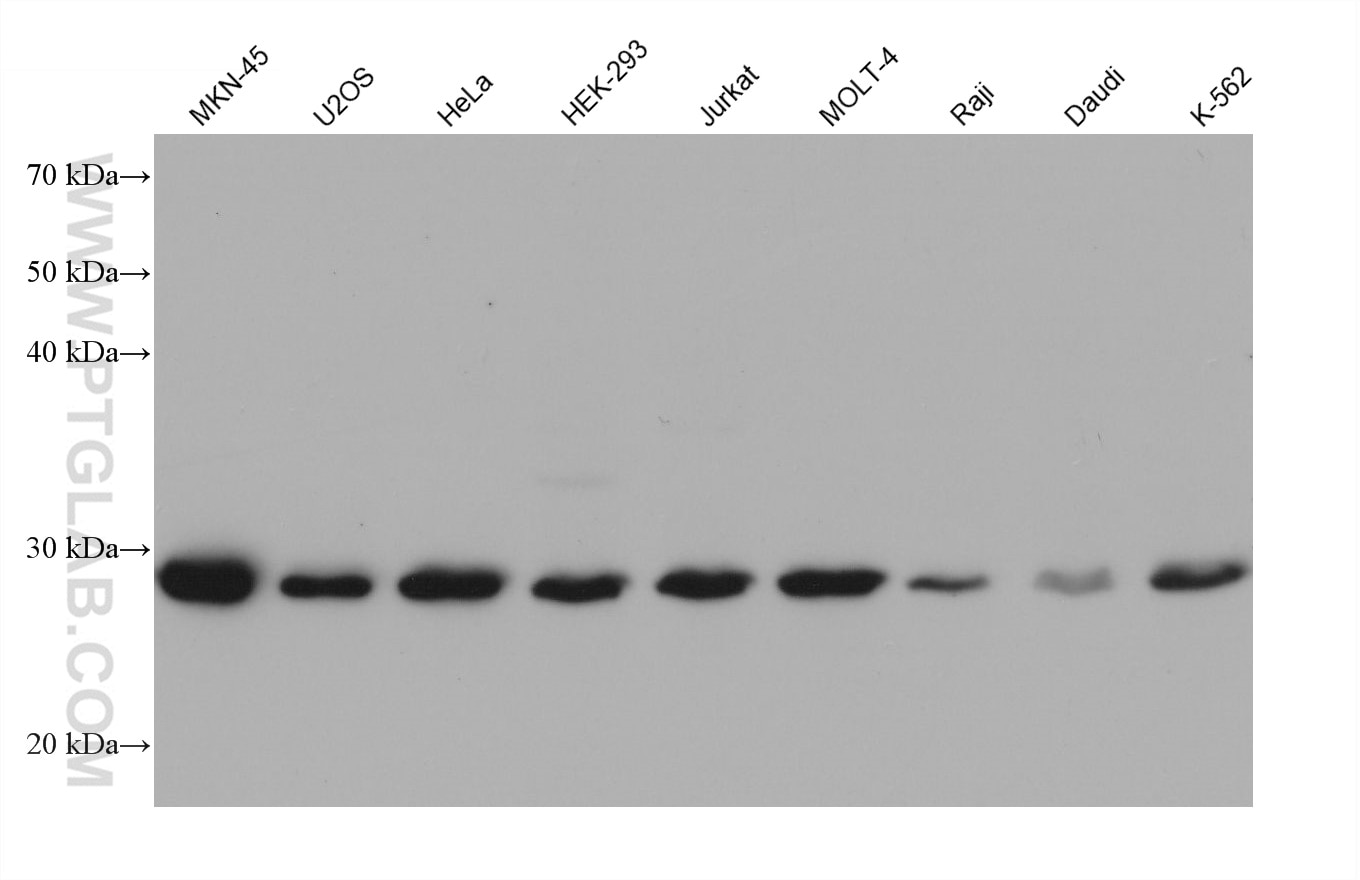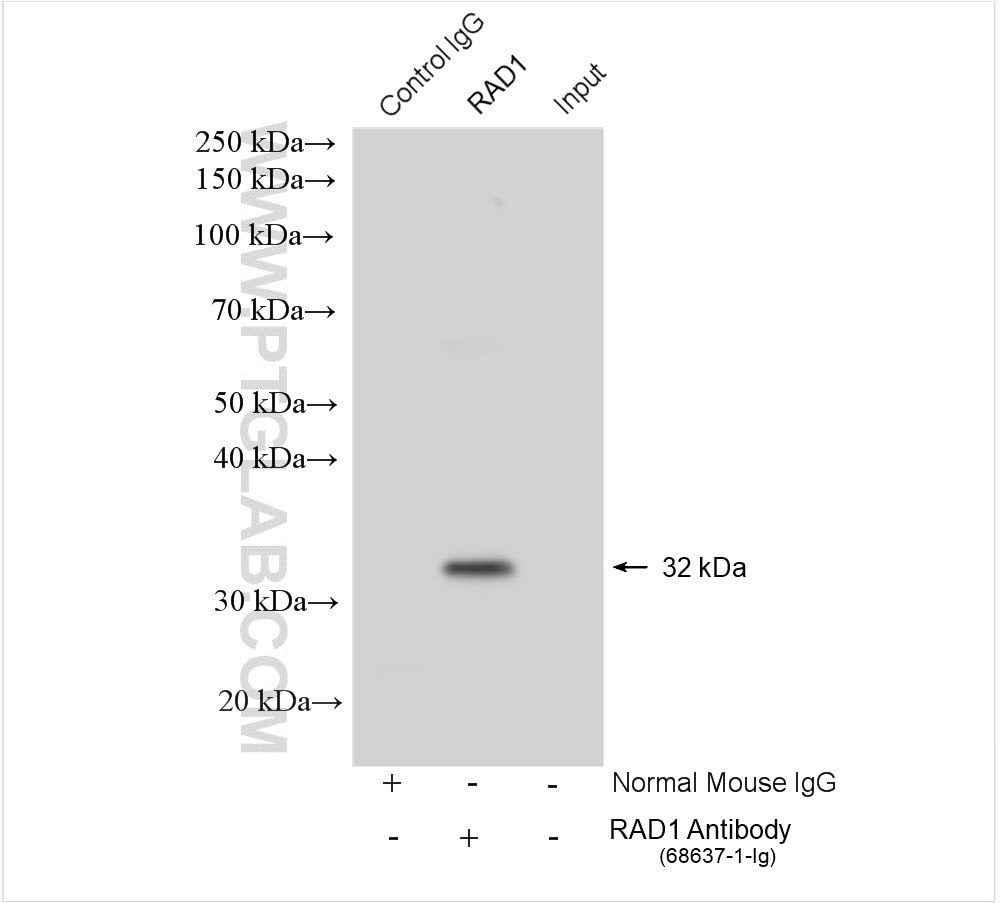RAD1 Monoklonaler Antikörper
RAD1 Monoklonal Antikörper für IP, WB, ELISA
Wirt / Isotyp
Maus / IgG2a
Getestete Reaktivität
human
Anwendung
WB, IP, ELISA
Konjugation
Unkonjugiert
CloneNo.
1A11E2
Kat-Nr. : 68637-1-Ig
Synonyme
Galerie der Validierungsdaten
Geprüfte Anwendungen
| Erfolgreiche Detektion in WB | MKN-45-Zellen, Daudi-Zellen, HEK-293-Zellen, HeLa-Zellen, Jurkat-Zellen, K-562-Zellen, MOLT-4-Zellen, Raji-Zellen, U2OS-Zellen |
| Erfolgreiche IP | HeLa-Zellen |
Empfohlene Verdünnung
| Anwendung | Verdünnung |
|---|---|
| Western Blot (WB) | WB : 1:2000-1:10000 |
| Immunpräzipitation (IP) | IP : 0.5-4.0 ug for 1.0-3.0 mg of total protein lysate |
| It is recommended that this reagent should be titrated in each testing system to obtain optimal results. | |
| Sample-dependent, check data in validation data gallery | |
Produktinformation
68637-1-Ig bindet in WB, IP, ELISA RAD1 und zeigt Reaktivität mit human
| Getestete Reaktivität | human |
| Wirt / Isotyp | Maus / IgG2a |
| Klonalität | Monoklonal |
| Typ | Antikörper |
| Immunogen | RAD1 fusion protein Ag33257 |
| Vollständiger Name | RAD1 homolog (S. pombe) |
| Berechnetes Molekulargewicht | 32 kDa |
| Beobachtetes Molekulargewicht | 32 kDa |
| GenBank-Zugangsnummer | BC006837 |
| Gene symbol | RAD1 |
| Gene ID (NCBI) | 5810 |
| Konjugation | Unkonjugiert |
| Form | Liquid |
| Reinigungsmethode | Protein-A-Reinigung |
| Lagerungspuffer | PBS mit 0.02% Natriumazid und 50% Glycerin pH 7.3. |
| Lagerungsbedingungen | Bei -20°C lagern. Nach dem Versand ein Jahr lang stabil Aliquotieren ist bei -20oC Lagerung nicht notwendig. 20ul Größen enthalten 0,1% BSA. |
Hintergrundinformationen
RAD1 is also named as REC1,hRAD1. The human RAD1 and HUS1 proteins associate in a complex that interacts with a highly modified form of RAD9. They concluded that these 3 proteins are central components of a DNA damage-responsive protein complex in human cells.It has 3 isoforms produced by alternative splicing.
Protokolle
| Produktspezifische Protokolle | |
|---|---|
| WB protocol for RAD1 antibody 68637-1-Ig | Protokoll herunterladen |
| IP protocol for RAD1 antibody 68637-1-Ig | Protokoll herunterladen |
| Standard-Protokolle | |
|---|---|
| Klicken Sie hier, um unsere Standardprotokolle anzuzeigen |



